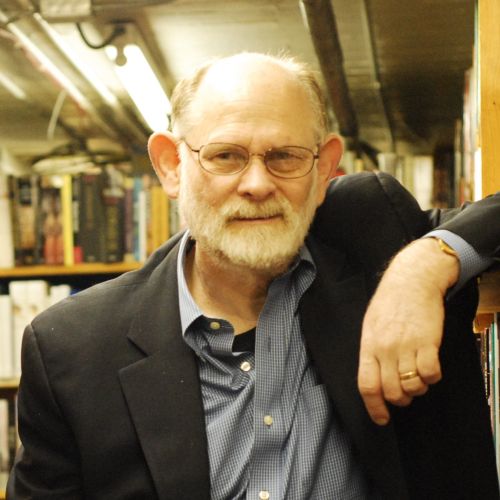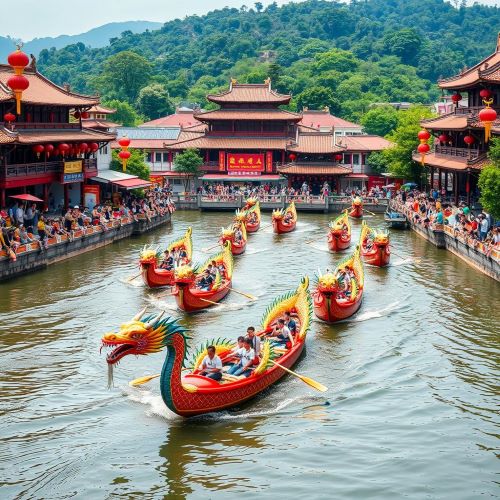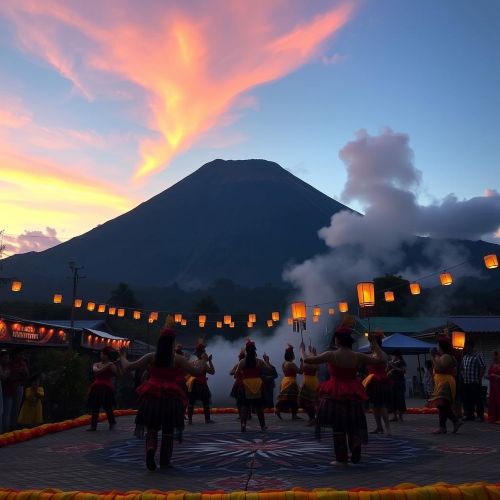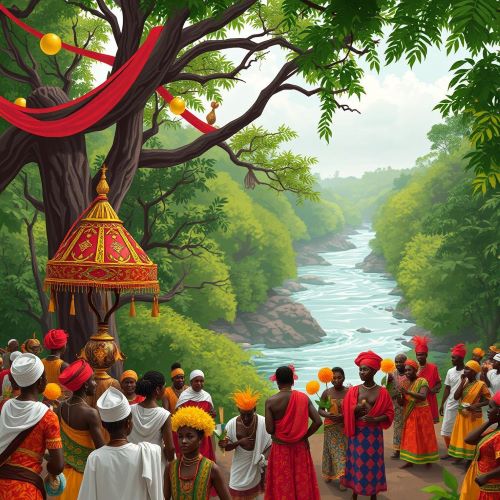Vesak : The Buddha Festival
At a glance
| Description | |
|---|---|
| Location | Worldwide |
| Country | India, Nepal, Sri Lanka, Thailand, Myanmar, Cambodia, Laos, Vietnam, Malaysia, Singapore, Indonesia, China, Hong Kong, Japan, Korean, Taiwan |
| Dedicated To | Gauthama Buddha |
| Duration | 1 day |
| Time of Year | May |
Introduction
Vesak, also called Buddha Day or Buddha Purnima, is the most sacred festival in the Buddhist calendar. Celebrated on the full moon of the lunar month of Vaisakha (April–May), it honors the three most defining moments in the life of Siddhartha Gautama, the Buddha—his birth at Lumbini, enlightenment under the Bodhi tree at Bodh Gaya, and his final passing into Parinirvana at Kushinagar. For Buddhists across Asia and around the world, Vesak is not just a day of remembrance but a living expression of the Buddha’s timeless teachings on compassion, impermanence, and liberation. The keyword Vesak embodies both history and spirituality, symbolizing the moment when human existence and cosmic truth meet.
Connection with Mythology
Vesak is steeped in Buddhist mythology, which transforms the Buddha’s life into sacred archetypes. Legends recount that at his birth, the infant Buddha took seven steps in each cardinal direction and declared that this would be his final rebirth. At Bodh Gaya, his enlightenment is described as a dramatic triumph over Māra, the embodiment of desire and illusion, who unleashed armies and temptations to distract him. In mythic accounts of his death, celestial beings filled the skies as the Buddha passed peacefully into Parinirvana, signifying freedom beyond the cycle of birth and death.
These stories, though symbolic rather than literal, are central to Vesak because they mirror the inner journey of every practitioner. They transform ordinary historical events into universal lessons, reminding followers that the Buddha’s path is one of self-mastery, wisdom, and compassion. The mythology surrounding Vesak provides the spiritual depth that makes the day more than just commemoration—it becomes a sacred drama replayed in ritual and devotion.
Main Activities
Vesak traditions differ across countries, but the essence of the festival lies in blending devotion with daily practice. At sunrise, devotees gather at temples for flag-hoisting ceremonies, chanting, and recitations of the Buddha’s teachings. Flowers, incense, and candles are placed at shrines as offerings, each symbolizing the impermanence of life. Just as flowers wither, incense burns out, and candles fade, Vesak reminds followers of the transient nature of human existence and the importance of spiritual reflection.
One of the most symbolic rituals is the “Bathing the Buddha” ceremony. During this practice, devotees pour water or tea over a small statue of the Buddha, representing the purification of the mind and the cleansing of negative karma. Widely observed across East and Southeast Asia, the ritual echoes the legend that celestial beings bathed the newborn Buddha. It has become both a communal and personal act of renewal, helping participants connect with the Buddha’s life story in a deeply symbolic way.
Ethical discipline is another important aspect of Vesak. Many Buddhists take vows to abstain from harmful actions, avoid intoxicants, and follow a vegetarian diet for the day. Some dress in simple white garments as a symbol of purity, humility, and detachment from worldly attachments. Temples host Dhamma talks and meditation sessions, giving lay followers opportunities to deepen their understanding of Buddhist teachings. These practices turn Vesak into a spiritual retreat that unites ritual with mindful living.
The festival also highlights compassion through acts of generosity. In Sri Lanka, food stalls known as dansälas distribute free meals and drinks to passersby, reflecting the value of selfless service. Across Buddhist communities, people donate to the poor, care for the sick, and support animal welfare initiatives. While older customs such as releasing captive animals have declined due to ecological concerns, the essence of Vesak as a celebration of kindness and compassion endures. Through charity and service, the festival becomes not only a time of remembrance but also a living expression of the Buddha’s teachings.
Importance in Cultural History
The origins of Vesak as a unified festival trace back to early Theravāda traditions, particularly in Sri Lanka. The 5th–6th century chronicle Mahāvaṃsa records Vesak as a day marking the Buddha’s great life events. Emperor Ashoka, who embraced Buddhism in the 3rd century BCE, is also believed to have promoted Vesak as part of his efforts to spread the Dharma throughout his empire.
The modern form of Vesak, with lanterns, public gatherings, and storytelling, developed during the 19th-century Buddhist revival in Sri Lanka. At that time, under colonial rule, Buddhist practices were suppressed, and Christian festivals dominated the cultural calendar. Making Vesak a public holiday was a way for Buddhists to reclaim their heritage and reaffirm their identity. From Sri Lanka, the tradition spread across the Theravāda world, becoming a cornerstone of Buddhist cultural expression.
In Mahāyāna countries, the Buddha’s birth, enlightenment, and death are often celebrated separately, but Vesak has still become a unifying symbol. In South Korea, the Yeondeunghoe lantern festival during Buddha’s birthday has been recognized by UNESCO as Intangible Cultural Heritage. These variations highlight how Vesak has adapted to local traditions while keeping its universal essence intact.
Need a place to stay? Book your hotel room now!
International Appeal
Vesak’s global significance was officially recognized in 1999 when the United Nations General Assembly declared it an international day of observance. Since then, Vesak has been celebrated at UN headquarters in New York and Geneva, where Buddhist leaders, diplomats, and interfaith groups gather to promote peace, dialogue, and compassion.
International Vesak conferences, hosted in countries like Thailand and Vietnam, bring together monks, scholars, and practitioners from around the world to discuss Buddhism’s role in addressing modern challenges such as climate change, inequality, and conflict. Themes such as “Solidarity and Tolerance for Human Dignity” underscore Vesak’s continuing relevance in shaping a more harmonious world.
In the West, Vesak is celebrated in Buddhist centers and temples in Europe, North America, and Australia. While smaller in scale compared to Asia, these events emphasize meditation, Dhamma talks, and interfaith dialogue. With digital platforms, Vesak has expanded even further—live-streamed ceremonies, online chanting, and virtual lantern-lighting allow millions worldwide to connect with the festival, even from afar.
Source
Gethin, R. (1998). The Foundations of Buddhism. Oxford University Press.
Strong, J. S. (2007). Relics of the Buddha. Princeton University Press.
United Nations. (1999). International Recognition of Vesak Day. Retrieved from https://www.un.org/en/observances/vesak-day
Trainor, K. (2004). Buddhism: The Illustrated Guide. Oxford University Press.
Harvey, P. (2013). An Introduction to Buddhism: Teachings, History and Practices (2nd ed.). Cambridge University Press.
Contributors to Wikimedia projects. (n.d.). Vesak – Wikipedia. https://en.wikipedia.org/wiki/Vesak
Vesak | Buddhist Holiday, Buddha’s Birthday, History, & Observances. (2025). https://www.britannica.com/topic/Vesak
Significance of Vesak – Buddha Day – BuddhaNet. (2022). https://www.buddhanet.net/vesak/
Vesak 2023: What is it and how do Buddhists celebrate Buddha Day … (2023). https://www.bbc.co.uk/newsround/48106687
[PDF] Vesak Day. (n.d.). https://operations.du.edu/file/8801
Frequently Asked Questions
Lorem ipsum dolor sit amet, consectetur adipiscing?
Lorem ipsum dolor sit amet, consectetur adipiscing elit. Praesent convallis vestibulum justo, ac tincidunt nunc vehicula quis. Nullam id dolor quis orci malesuada feugiat. Curabitur aliquet libero at urna ullamcorper, ac ultricies nulla dapibus.
Lorem ipsum dolor sit amet, consectetur adipiscing?
Lorem ipsum dolor sit amet, consectetur adipiscing elit. Praesent convallis vestibulum justo, ac tincidunt nunc vehicula quis. Nullam id dolor quis orci malesuada feugiat. Curabitur aliquet libero at urna ullamcorper, ac ultricies nulla dapibus.
Lorem ipsum dolor sit amet, consectetur adipiscing?
Lorem ipsum dolor sit amet, consectetur adipiscing elit. Praesent convallis vestibulum justo, ac tincidunt nunc vehicula quis. Nullam id dolor quis orci malesuada feugiat. Curabitur aliquet libero at urna ullamcorper, ac ultricies nulla dapibus.
Lorem ipsum dolor sit amet, consectetur adipiscing?
Lorem ipsum dolor sit amet, consectetur adipiscing elit. Praesent convallis vestibulum justo, ac tincidunt nunc vehicula quis. Nullam id dolor quis orci malesuada feugiat. Curabitur aliquet libero at urna ullamcorper, ac ultricies nulla dapibus.
Lorem ipsum dolor sit amet, consectetur adipiscing?
Lorem ipsum dolor sit amet, consectetur adipiscing elit. Praesent convallis vestibulum justo, ac tincidunt nunc vehicula quis. Nullam id dolor quis orci malesuada feugiat. Curabitur aliquet libero at urna ullamcorper, ac ultricies nulla dapibus.









